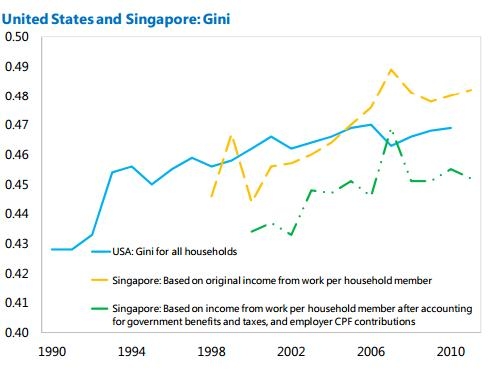
Why income inequality is worse in Singapore than in US
Singapore is home to world’s wealthy but income of the poorest stagnated in the last 10 years.
According to the International Monetary Fund, as in many countries, income inequality in Singapore has risen.
At more than US$50,000 in 2011, IMF notes that while average per capita income is high, income dispersion is wide.
“According to Boston Consulting Group, Singapore has the highest proportion of households (15½ percent in 2010) with US$1 million or more in liquid assets. On the other hand, incomes of the lowest decile of households stagnated during the previous decade. As a result, the Gini coefficient rose rapidly in the early part of the 2000s,” it said.
“While it has moderated recently and is somewhat lower once net government benefits
and employers’ CPF contributions are included, it remains among the highest in Asia. Singapore’s high degree of openness to trade and labor flows in the context of skill-biased technological change may have contributed to rising income inequality through a skill premium.
Growing inequality, and rising living costs and house prices were prominent issues during the May 2011 general election campaign, which saw the governing People’s Action Party securing its lowest-ever share of the popular vote (60 percent).
























 Advertise
Advertise






